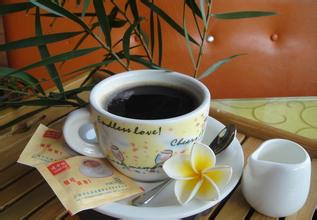Introduction of high-quality coffee beans with special flavor in Mantenin coffee producing area of Indonesia
The topography of Sumatra is long and narrow. The topography of Sumatra is mainly from northwest to southeast of the island's Bali Mountains Barisan Mountains and the eastern lowlands. The mountains stretch, with more than 90 volcanoes and many volcanic lakes, volcanoes provide fertile soil suitable for coffee growth. For the tropical rain forest climate, high temperature and rainy all the year round.
Sumatra is the largest producer of Indonesian coffee, and well-known coffee-growing areas are mainly concentrated in the northern mountains, including Aceh in the northernmost province of Aceh and Sumatera Utara in North Sumatra. Including the well-known Mantenin Mandheling, Lin Dong Lintong, Jiayushan Gayo Mountain.
The name of Mandheling coffee is said to come from the local people, mandailing. The producing areas mostly point to the mountains in the north of Lake dopa, and the specific producing areas need to be verified.
Lintong coffee comes from the foothills around Lake Lake Toba in North Sumatra, Sumatra's largest volcanic lake, and its name comes from the small town called lintong in the southwest of Lake dopa.
Gayo mountain Coffee from Takengon, Takangong, Aceh Province and the mountains around Lake Lake Tawar.
Medan Medan and Padang Padang are important cities involved in coffee. They are the capital of North Sumatra and West Sumatra respectively, and they are also the most densely populated areas in Sumatra. The former is an important distribution center for Sumatra coffee exports, while the latter is also a well-known coffee production around, such as Ankola.
Coffee from Sumatra includes Arabica and Robusta, which is usually grown at high altitudes in the mountains, while robusta is grown in the lowlands. Coffee processing is famous for the traditional "wet planing", Giling Basah,wet-hulled, which is partly due to the local humid climate.
Kopi Luwak is a traditional specialty in some Indonesian islands, such as Java, Sumatra, Bali and Sulawesi. The civet only contains this unique coffee in its feces after eating local coffee cherries. In fact, the official name of Kopi Luwak is Kopi Luwak. Kopi means "coffee" in Indonesian, while Luwak is a wild civet in Indonesia.
Sheng Zhen, a staff member of the Indonesian Pavilion, said that in order to get precious "cat poop coffee beans," local farmers in Indonesia would put civets into cages to feed themselves, and some coffee merchants simply packed an island to keep these cats. Let them enjoy the natural environment of sunshine and rain. "the civets eat and pull by themselves, and you can't force them to eat or pull, so the coffee beans in the excrement are very precious!" It is reported that this rare coffee produces only 500 pounds a year. The raw materials of this kind of coffee are difficult to obtain, and the production process is very complicated, and it must go through strict sanitary procedures, such as drying, roasting, brewing and so on. However, the final coffee will produce a unique aroma, so it is very expensive
The distillation process of Kopi Luwak was demonstrated at the scene. "12 grams of Kopi Luwak, distilled with 50 to 55 grams of water, so that the final coffee is the most mellow." The coffee grounds left by Kopi Luwak are also very unique, smooth and without holes, which ordinary coffee can't do.

Important Notice :
前街咖啡 FrontStreet Coffee has moved to new addredd:
FrontStreet Coffee Address: 315,Donghua East Road,GuangZhou
Tel:020 38364473
- Prev

Introduction to the characteristics of Panamanian Coffee Flavor Coffee
The current government of Panama was formed on July 1, 2009. the main members are: vice President Juan Carlos Varela, Minister of the Presidential Office Jimmy Papadimitriu, Foreign Minister Fernando Nunes Favre, Minister of the Interior Jorge Ricardo Favre, Minister of Public Security Jos é Raul Mulino, Minister of economy and Finance Frank George de Lima, Minister of Commerce and Industry Ricadogiha
- Next

Jamaican Blue Mountain Coffee Variety Flavor Manor characteristics of Fruit Coffee
The same coffee tree species, whether planted in Hawaii, Kenya, Papua New Guinea or anywhere else with a similar climate, cannot produce the flavor of blue mountain coffee beans. Pure Jamaican Blue Mountain Coffee perfectly combines the unique sour, bitter, sweet, mellow and other flavors of coffee to form a strong and attractive elegant flavor, which is unmatched by other coffee. Love Blue Mountain Coffee
Related
- Detailed explanation of Jadeite planting Land in Panamanian Jadeite Manor introduction to the grading system of Jadeite competitive bidding, Red bid, Green bid and Rose Summer
- Story of Coffee planting in Brenka region of Costa Rica Stonehenge Manor anaerobic heavy honey treatment of flavor mouth
- What's on the barrel of Blue Mountain Coffee beans?
- Can American coffee also pull flowers? How to use hot American style to pull out a good-looking pattern?
- Can you make a cold extract with coffee beans? What is the right proportion for cold-extracted coffee formula?
- Indonesian PWN Gold Mandrine Coffee Origin Features Flavor How to Chong? Mandolin coffee is American.
- A brief introduction to the flavor characteristics of Brazilian yellow bourbon coffee beans
- What is the effect of different water quality on the flavor of cold-extracted coffee? What kind of water is best for brewing coffee?
- Why do you think of Rose Summer whenever you mention Panamanian coffee?
- Introduction to the characteristics of authentic blue mountain coffee bean producing areas? What is the CIB Coffee Authority in Jamaica?

